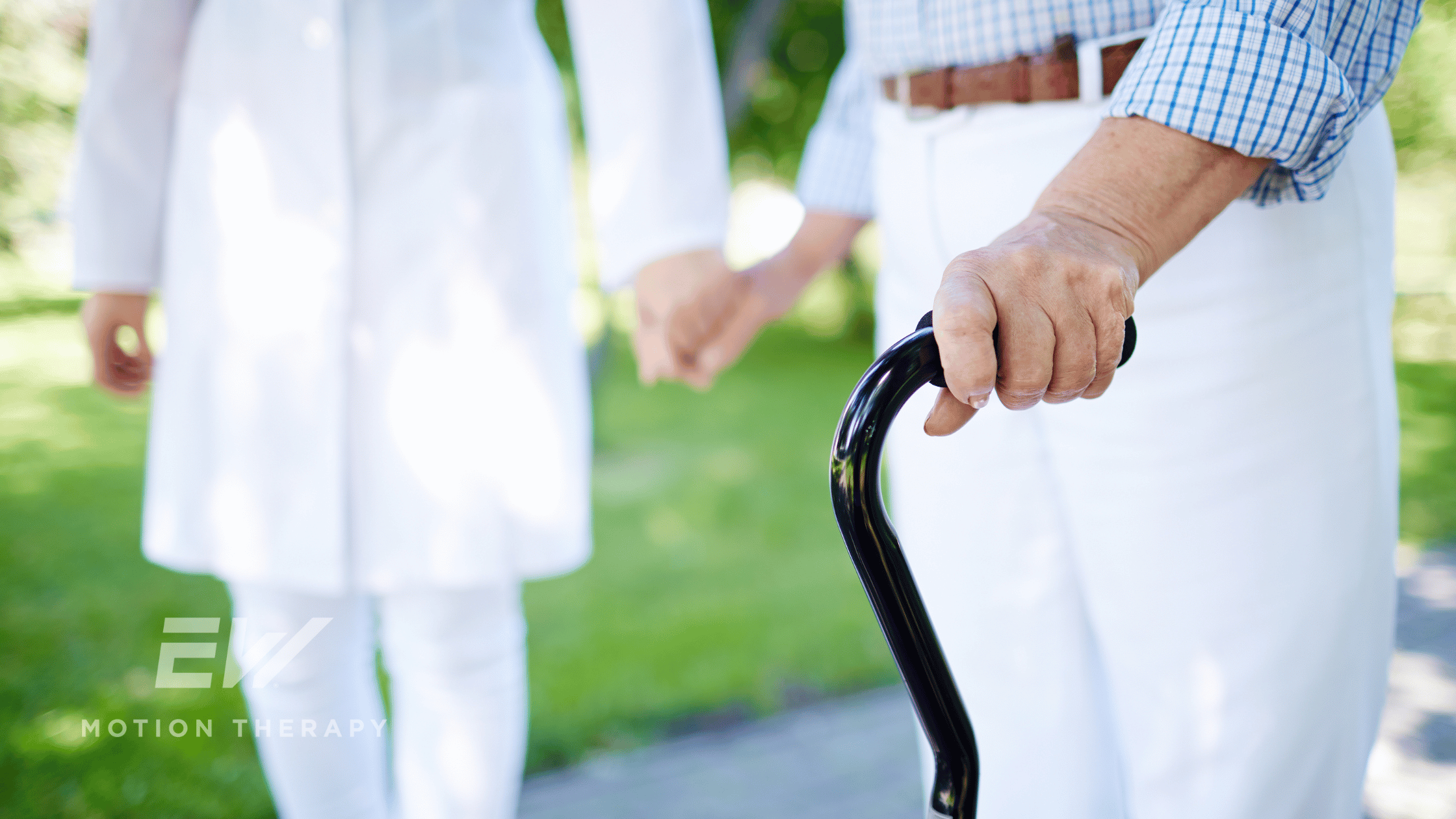The Importance of Grip Strength for Health and Longevity

Licensed Physical Therapist, PT, DPT // Dry Needling Certified // LSVT Big Certified // EW Motion Therapy Trussville
Grip strength is an often overlooked but crucial indicator of overall health and longevity. Whether it’s opening a jar, carrying groceries, or engaging in fitness activities, our grip strength plays a vital role in daily tasks. But beyond its functional benefits, studies show that grip strength is a reliable predictor of health outcomes as we age. Maintaining good grip strength can reduce the risk of chronic disease, improve quality of life, and even contribute to longer lifespans. In this article, we’ll explore why grip strength matters, the negative effects of decreased grip strength, ways to improve it, and how physical therapy can help.
Why grip strength matters
Grip strength is more than just a measure of how firm your handshake is—it reflects muscle function and overall strength throughout the body. It serves as a marker for underlying health conditions and can be used as a quick and non-invasive way to assess a person’s risk for cardiovascular disease, diabetes, and even mortality. Studies have shown that individuals with weaker grip strength tend to have higher risks of developing heart disease, stroke, and metabolic disorders.
In fact, grip strength is considered such a strong indicator of health that it is often used in clinical settings to assess a patient’s recovery after surgery or an injury. It can be a key factor in determining whether a person is at risk of frailty, especially as they age. The ability to perform daily tasks like lifting, carrying, or even opening containers can be greatly diminished if grip strength declines, leading to a reduced quality of life.
Negative effects of decreased grip strength
As grip strength declines, a range of negative consequences can emerge that impact both physical and mental well-being. These effects are especially pronounced in older adults but can also affect younger individuals who experience sudden or gradual loss of hand strength due to injury, illness, or disuse.
Reduced functional independence
Weak grip strength can lead to difficulty performing basic tasks such as holding utensils, lifting groceries, or turning doorknobs. Over time, this loss of functional ability can make individuals more dependent on others for assistance, diminishing their sense of autonomy and potentially leading to feelings of frustration or depression.
Increased risk of falls and fractures
Research has shown that reduced grip strength is correlated with a higher risk of falls, particularly in older adults. A firm grip is necessary for stabilizing the body during movements like standing, walking, or reaching for objects. When grip strength weakens, the body’s overall stability and balance are compromised, increasing the risk of falls and fractures, especially hip fractures, which are notorious for their negative impact on long-term mobility.
Connection to chronic diseases
Decreased grip strength has also been linked to a higher prevalence of chronic diseases such as heart disease, diabetes, and arthritis. Since grip strength reflects muscle mass and function, a loss of strength often indicates muscle atrophy or weakness in other parts of the body. This muscle deterioration can lead to a reduced ability to engage in physical activity, which is crucial for managing or preventing chronic health conditions.
Cognitive decline
There is emerging evidence that links poor grip strength with cognitive decline. Some studies have suggested that individuals with weaker grip strength are more likely to experience cognitive impairments, including dementia. The reason behind this association is still under investigation, but it may be related to overall physical health and the body’s ability to maintain blood flow and energy to the brain.
Ways to improve grip strength
The good news is that grip strength can be improved at any age through targeted exercises and lifestyle changes. Whether you’re an athlete looking to enhance your performance or someone seeking to maintain independence as you age, improving grip strength is a worthy investment in your long-term health.
Resistance training
Resistance training exercises that focus on strengthening the hands, wrists, and forearms are some of the most effective ways to boost grip strength. Exercises like deadlifts and pull-ups engage your grip muscles in a way that can build strength over time. Additionally, using hand grippers or resistance bands to perform squeezing exercises can isolate and strengthen the muscles in your hands and forearms.
Functional activities
Incorporating functional activities that mimic everyday movements is another way to maintain or improve grip strength. Gardening, carrying groceries, or performing household chores can serve as natural opportunities to work on your grip. Simple tasks like squeezing a stress ball or repeatedly opening and closing your hands can also contribute to better strength and dexterity.
Stretching and mobility exercises
Keeping your hands and wrists flexible is just as important as building strength. Stretching exercises that improve mobility can help prevent stiffness and discomfort, which can negatively affect your grip strength over time. Wrist stretches, finger stretches, and even massage can help improve circulation and maintain muscle function in the hands and forearms.
Consistency is key
Like any other aspect of fitness, improving grip strength requires consistency. Regularly incorporating grip-specific exercises into your fitness routine will yield gradual but noticeable results. Even just a few minutes a day of targeted work can make a significant difference in your overall grip strength and, by extension, your health.
How physical therapy can help
Physical therapy is critical in preventing and treating grip strength decline. Whether you’re recovering from an injury, managing a chronic condition, or simply trying to improve your overall strength, a physical therapist can design a program tailored to your needs. Here are some ways physical therapy can help:
Personalized assessment
A physical therapist will begin by assessing your current grip strength (sometimes using a device called a hand dynamometer) and identifying any areas of weakness. This assessment might include strength tests, range of motion evaluations, and an analysis of your ability to perform functional tasks. Based on this information, your therapist can develop a customized treatment plan that targets your specific areas of concern.
Strengthening exercises
Your physical therapist will guide you through exercises designed to improve not only grip strength but also the overall function of your hands, wrists, and forearms. These exercises are often progressive, starting with basic movements, like those you do in your daily routine, and advancing to more challenging exercises as your strength improves. This progression helps to ensure that you make consistent gains without overloading your muscles or joints.
Addressing underlying issues
Sometimes, decreased grip strength is a symptom of an underlying issue, such as arthritis, nerve compression (like carpal tunnel syndrome), or a more generalized muscle weakness. Think about a task that requires grip strength, such as opening a jar. That task and many others require not just your hands but also core strength, elbow strength, and shoulder strength. Physical therapists are trained to identify and address underlying issues up the entire kinetic chain, offering targeted interventions such as manual therapy, ergonomic adjustments, and pain management strategies to alleviate discomfort and enhance mobility.
Injury prevention and recovery
If you’ve experienced an injury that has affected your grip strength—such as a wrist fracture, tendonitis, or nerve damage—physical therapy can help you recover safely and effectively. Therapists use a combination of hands-on techniques, mobility exercises, and strengthening protocols to aid in recovery. In addition to rehabilitation, they can also educate you on how to prevent future injuries by improving posture, ergonomics, and overall strength.
Long-term maintenance
Physical therapists not only help you regain grip strength but also focus on long-term maintenance. They provide tools and exercises that you can incorporate into your daily routine to maintain your strength and functionality for years to come. This long-term approach is crucial, especially for older adults who want to maintain their independence and quality of life.
Grip strength is a powerful yet often underestimated marker of overall health and longevity. From reducing the risk of chronic diseases to preventing falls and maintaining functional independence, grip strength plays a significant role in your well-being. The negative effects of decreased grip strength can be far-reaching, but the good news is that improving your grip is possible through consistent exercise and physical therapy.
Physical therapists offer a tailored approach to improving grip strength, addressing underlying conditions, and helping you regain your strength safely. No matter your age or current strength level, taking steps to improve your grip can lead to a healthier, more independent life. So, don’t wait—start incorporating grip strength exercises into your routine, and consider consulting a physical therapist to help you achieve the best results. Our physical therapists at EW Motion Therapy take a full-body approach to ensure they address imbalances causing pain or a decrease in functional movement. To learn more about what physical therapy might cost you, click the button below to download our free pricing guide.


